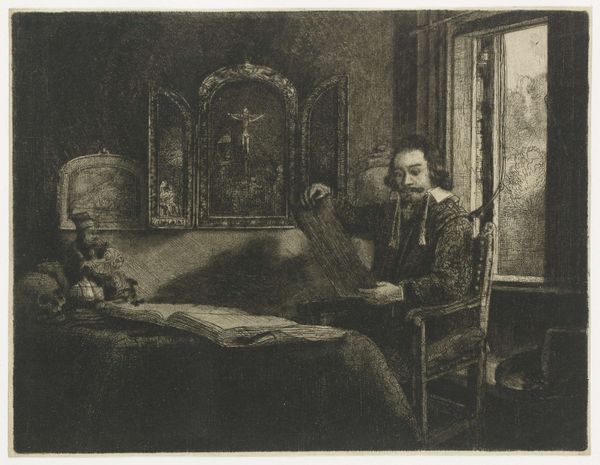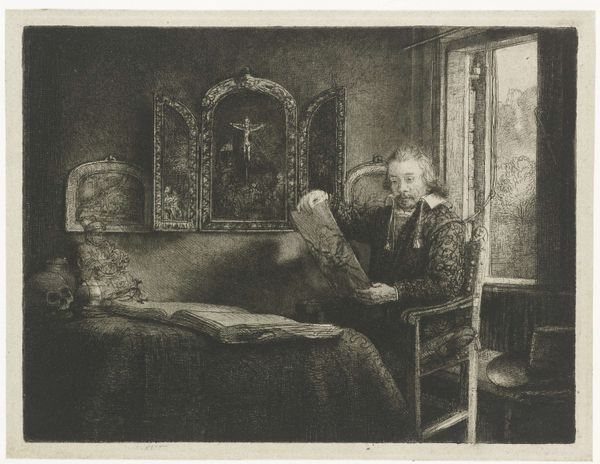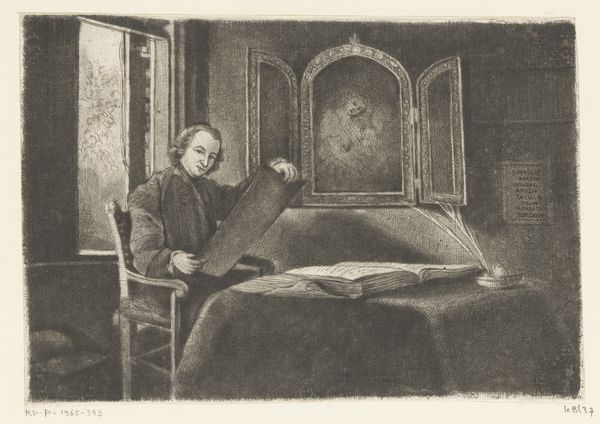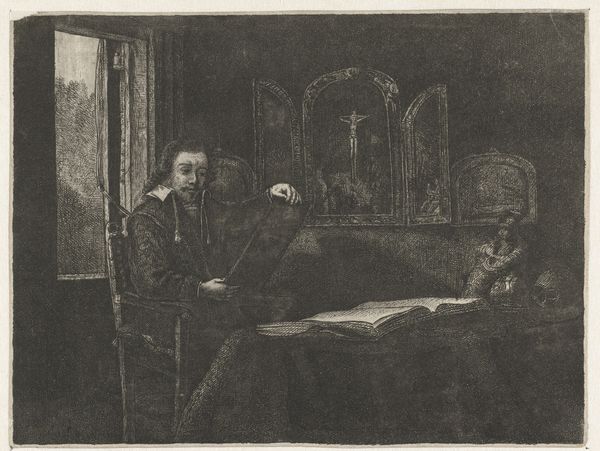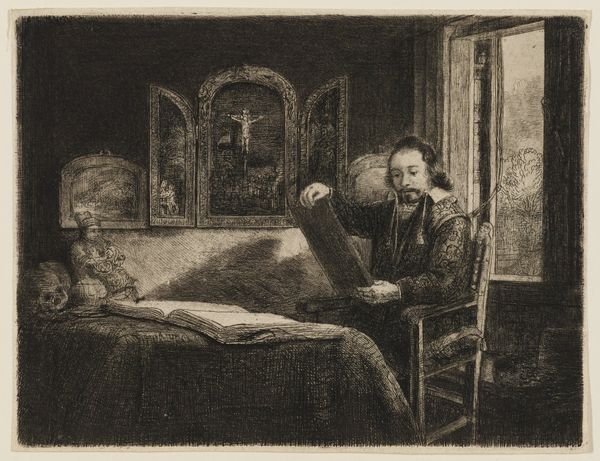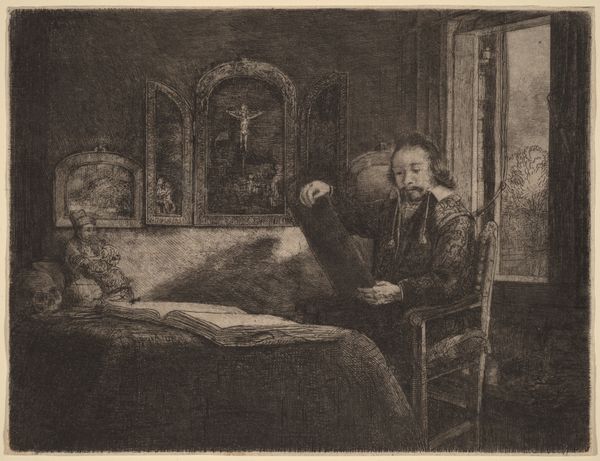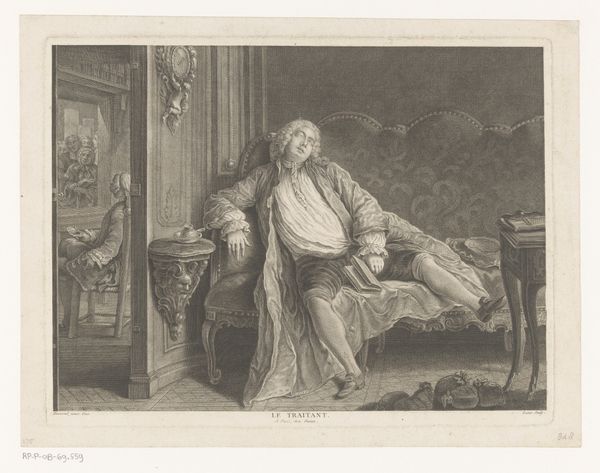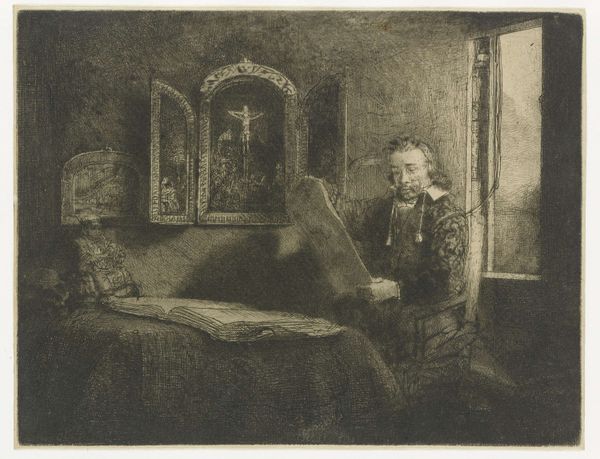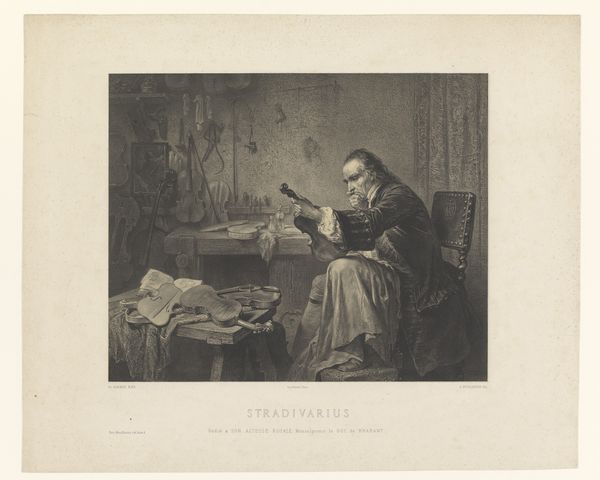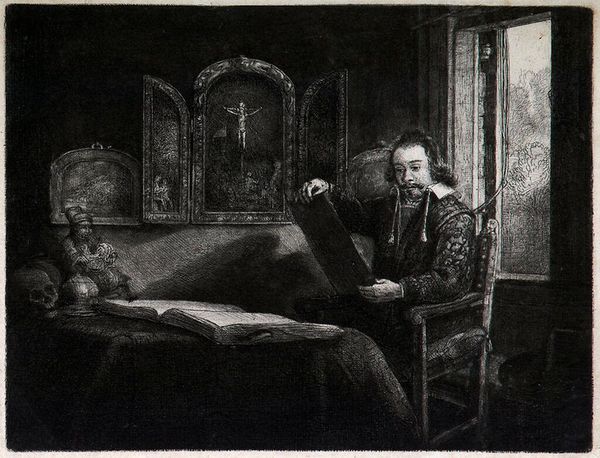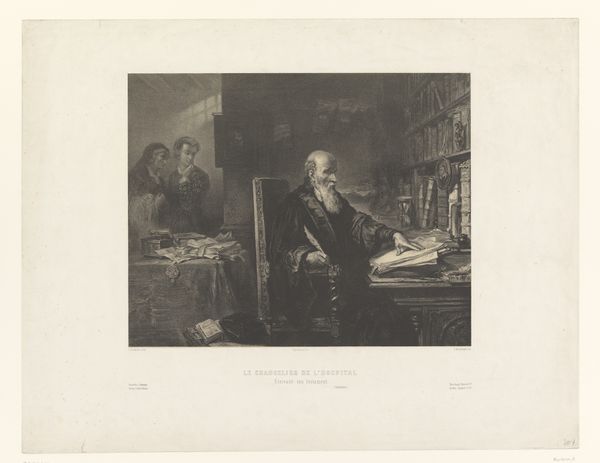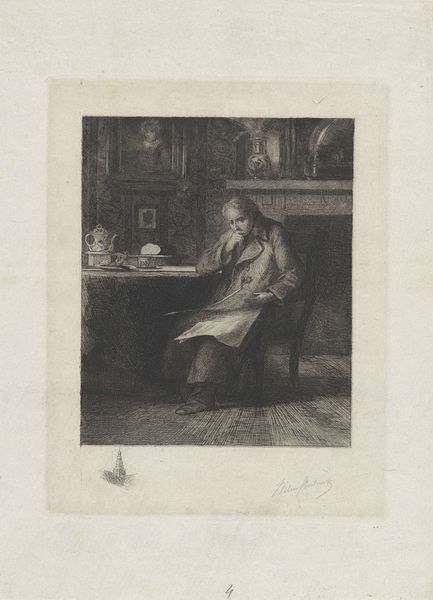
drawing, print, etching
#
portrait
#
drawing
#
baroque
#
dutch-golden-age
# print
#
etching
#
book
#
history-painting
Dimensions: 6 1/8 x 9 1/16 in. (15.6 x 23 cm)
Copyright: Public Domain
Editor: This is Rembrandt van Rijn’s "Abraham Francen, Apothecary," an etching created sometime between 1651 and 1661. I’m struck by the stark contrast between the light flooding in from the window and the shadowed interior. It feels very staged, theatrical almost. What do you see in this piece, beyond the immediate visual impression? Curator: I see a meticulously constructed representation of social and intellectual life in the Dutch Golden Age. Consider the triptych in the background depicting the crucifixion. Its inclusion signifies the complex relationship between faith and knowledge during this period. How might Francen's profession as an apothecary intersect with religious and scientific beliefs? Editor: That’s a great point, I hadn't considered the connection between the religious imagery and his profession. I guess I had only noticed the skull as a typical "vanitas" symbol. Curator: Exactly. And note how Rembrandt uses light not just for aesthetic effect, but to draw attention to the objects indicative of Francen’s trade – the book, the various implements. These are not just props, but markers of his social standing and intellectual pursuits. How do you think this image contributed to Rembrandt's own social positioning as an artist? Editor: I suppose portraying a prominent figure like Francen would elevate Rembrandt’s status as well, demonstrating his ability to capture not just likeness but also intellectual gravitas. It seems less like a simple portrait and more like a carefully crafted statement about the importance of knowledge and status. Curator: Precisely. The composition becomes a form of social currency, traded between artist and subject, reinforcing their positions within a specific cultural hierarchy. Do you notice any other signs that confirm the cultural context? Editor: Absolutely! Now that I look more closely, even the man's elaborate clothing style situates him and the painting within the baroque period. I now understand the cultural layers adding depth and texture to this print. Curator: I’m glad. Remember that art doesn't exist in a vacuum. Understanding the cultural and historical context is crucial to unraveling its multiple meanings.
Comments
No comments
Be the first to comment and join the conversation on the ultimate creative platform.
